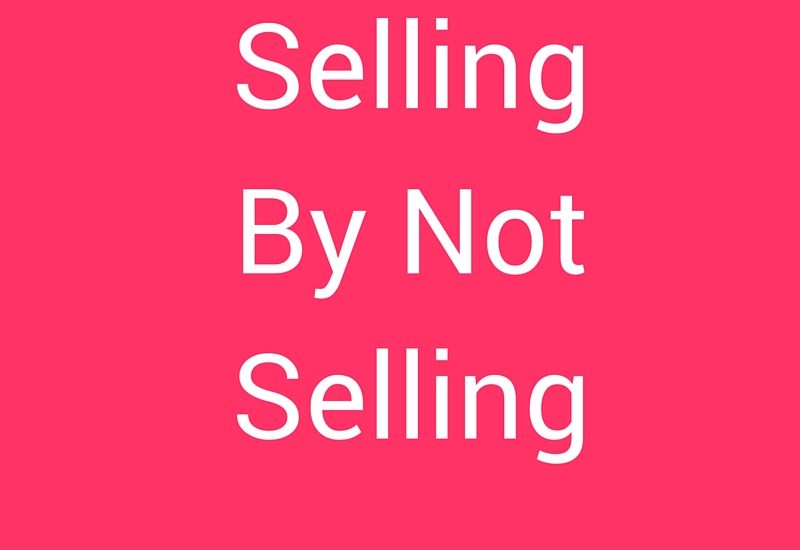Selling By Not Selling
- March 21, 2016
- Posted by: Rochelle
- Category: Client Relationships, Marketing + Selling

It was early in the life of my first start-up.
Nothing would smooth our glide path faster than the right handful of new clients.
The first was a “gimmee”—a prior client who’d just accepted a new job (neatly rendering my two-year non-compete invalid).
The second and third were no slam-dunks, but were great-fit referrals where we could easily demonstrate our value.
It was the fourth where I learned about selling by not selling.
I’ve long forgotten the name of the company but the lead client was a crusty, been-there, seen-that kind of guy. He had a cynical worldview that probably would make the work we were proposing highly challenging, if not impossible. He wasn’t the right client for us, but back then, I was too polite (or too timid) to say so—wouldn’t that have saved us all some time!
Instead, I tried to convince him we weren’t right for HIM. I explained that we would be too expensive—and named the highest rate we had at the time. It was a figure I was sure would have me kicked out of his office, but instead he decided we must be REALLY good. So I told him we couldn’t start for several weeks because we were exceedingly busy. Nope, that didn’t dissuade him either.
You know where this is going: the more I told him why he shouldn’t hire us, the more he wanted us.
When Adam Grant talks about this idea in his new book Originals (look for “The Sarick Effect”), he tells stories about the benefits of leading not from unbridled optimism, but from your weaknesses.
Risky, right?
But the other party KNOWS you’re selling. Some are ready and waiting to poke holes in your pitch (especially those super-busy corporate cynical types who are looking to narrow their choices). So why not just lead with the potential sticking points and disarm them with your candor?
You might tell potential clients right up front the truths that could get in the way of your being their ideal solution.
I can think of a few: you have no expertise in their industry; you haven’t solved a problem exactly like theirs; you don’t have enough bandwidth to guarantee you’ll meet their deadline.
The worst that happens is they fold their tent and you never hear from them again.
But your approach might just build a bond between you—create a small zone of safety where none existed before. And that becomes the first step to welcoming a new client.
No, my anti-sell guy did not become client #4.
I’m sure he would have if I hadn’t finally mustered the courage to tell him we just couldn’t deliver what he wanted in his timeframe—and then gave him a referral to another firm.
But the next time I used the anti-sell—when I was pretty sure our track record wasn’t as vaunted as our competitors—it worked perfectly. Our passion for the project and an “all in” attitude tipped the scales and they picked the underdog.
Selling by not selling.
How cool is that?
p.s. Like what you see here? Head on up to that orange bar to sign up pronto and I’ll deliver my weekly insights directly to your in-box







Most of us have encountered this type of sale. Not many of us have had the fortitude to say no; and were not as lucky as you to have gotten out of it. Sometimes a good sale is not good for the business.
Ain’t that the truth Ed 🙂
A group of primarily attorneys discussed this topic last year as part of a CLE (continuing legal education) program and spotlight topic at a networking group that many who attended the CLE belong to.
The interesting question involves if you do recommend elsewhere does “elsewhere” become a source of referrals for gigs they might turn down (I remain doubtful on this one — at least in my field).
Tricky question Corey–I think sometimes it doesn’t matter if they ever refer your way if what you care about is getting the client the right fit. But when you make multiple referrals, it would not feel good to be on a 1-way street…